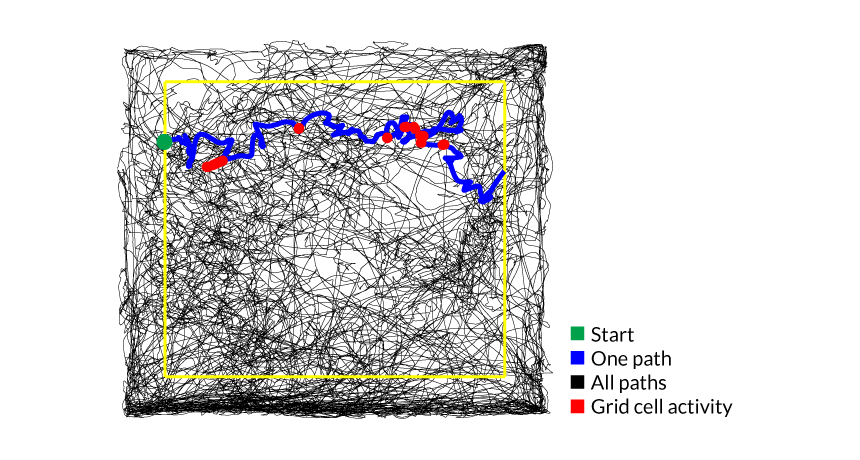When brain’s GPS goes awry, barriers can reboot it
Running into a literal boundary aids reorientation, mouse study shows

MOUSE MAP As a mouse meanders farther away from a border (one path highlighted in blue), a grid cell’s pattern of behavior (red) becomes less regular, distorting the animal’s internal map. Hitting the border can reset it, a study suggests.
Hardcastle et al/Neuron, 2015






